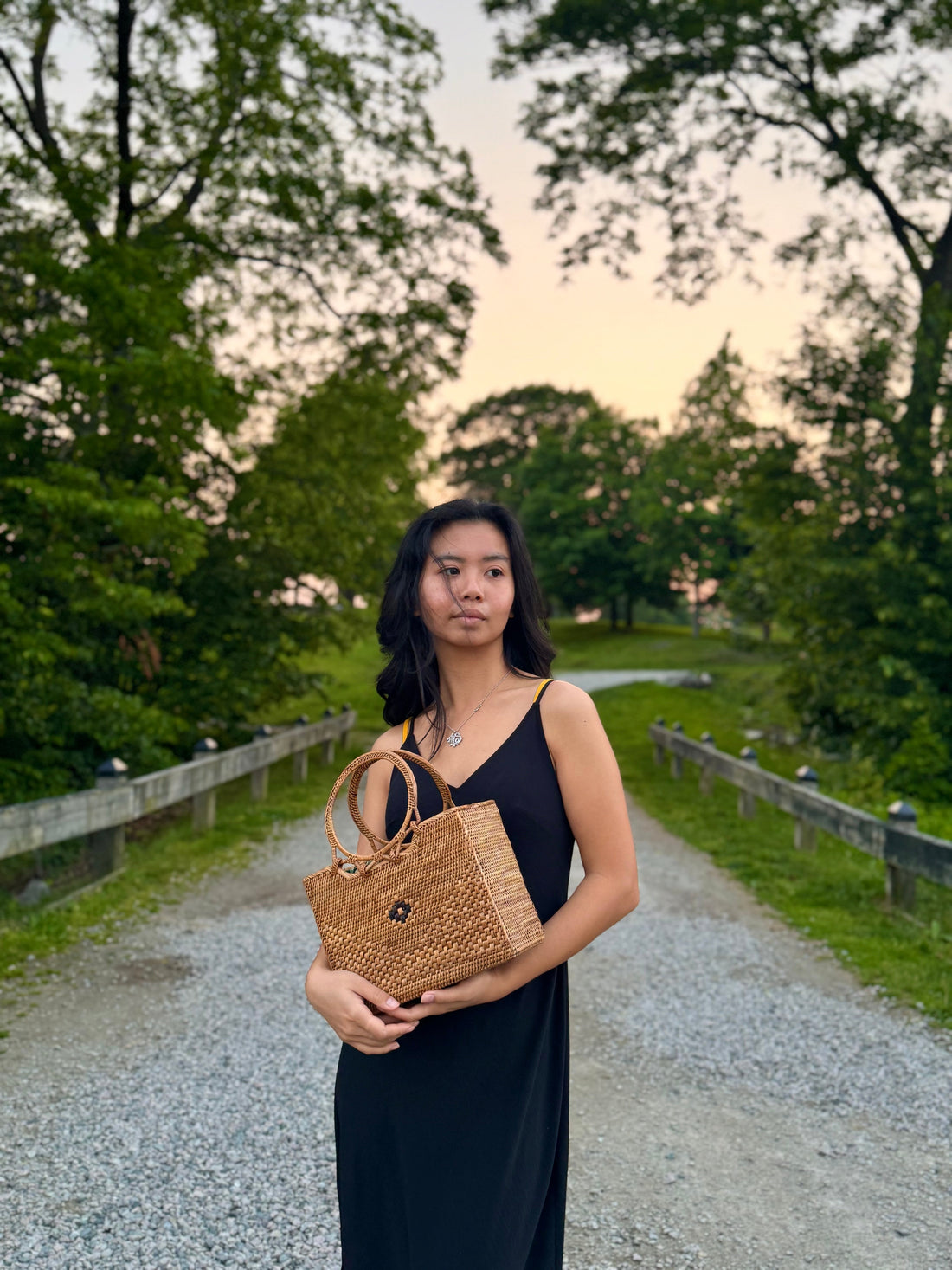
Rattan Bags Are the “It” Bag of the Season, Here’s Why Everyone’s Talking About Them
Mutiara HeritageShare
Hot take: handmade rattan bags are having a serious moment right now, emerging as must-have sustainable accessories across the USA. From fashion runways to summer markets, these structured, handcrafted beauties are showing up everywhere and for good reason. They are versatile, sustainable, timeless, and most importantly, they tell a story.
At Mutiara Heritage, we’ve witnessed firsthand how these bags spark conversations. Whether slung over a linen jumpsuit or paired with a floaty floral dress, rattan adds texture, character, and soul to an outfit. But this trend goes deeper than aesthetics, it represents a quiet rebellion against fast fashion.
Why Rattan Bags Are Trending
Fashion is shifting towards slow fashion. Conscious consumers in the USA and beyond are increasingly asking: Where do my accessories come from? Who made them? What impact does their production leave behind? Handmade rattan bags answer these questions with grace, they’re local, sustainable, and support artisan communities that depend on traditional craftsmanship.
The popularity of rattan bags reflects growing awareness of choosing quality over quantity. Shoppers are intentionally selecting products that aren’t just manufactured, but crafted thoughtfully and ethically.
How Are Rattan Bags Made?
Unlike mass-produced accessories, handmade rattan bags are crafted from natural vines abundant in Southeast Asia, particularly Indonesia. Harvested sustainably, artisans cut the rattan by hand, sun-dry it, and carefully weave it using skills passed down through generations.
The beauty of rattan lies in its strength and lightweight nature. It holds its shape beautifully and lasts for years, making it not just trendy but also an essential investment piece for conscious consumers.
Why Rattan Is Essential to Slow Fashion
Slow fashion emphasizes products that are ethically sourced, sustainably made, and built to last. Rattan bags align perfectly with these principles. By purchasing a rattan bag, you’re directly supporting ethical labor practices, preserving cultural traditions, and reducing environmental impact by choosing biodegradable, renewable materials.
At Mutiara Heritage, we proudly collaborate with Indonesian artisans, providing fair wages that helps artisans support their families and preserve cultural tradition. Every bag represents more than style; it embodies a commitment to meaningful fashion.
Styling Your Rattan Bag: From Bali to Boston
It’s not just tropical destinations embracing handmade rattan bags. These versatile accessories have won hearts from Bali beaches to Boston streets. No longer confined to summertime, rattan bags effortlessly complement a wide array of looks:
- Casual Elegance: Pair with linen dresses and sandals for brunch dates.
- Urban Chic: Style with denim, blouses, and tailored blazers for an urban feel.
- Season-less Staple: Add a rattan bag to fall layers, proving its year-round versatility.
At Mutiara Heritage, our curated collection offers classic top-handles and playful cross body bags, thoughtfully designed for weekday errands and weekend getaways alike.
How to Care for Your Rattan Bag
Proper care ensures your rattan bag remains beautiful for years:
- Wipe gently with a damp cloth.
- Avoid prolonged exposure to moisture.
- Store in a breathable dust bag when not in use.
The Future of Rattan Bags: A Timeless Accessory
Here’s the truth: rattan isn’t just a fleeting trend, it’s a movement. It honors traditional artisanship while addressing today’s conscious consumer values. Rattan bags transcend mere fashion. They are re conversation starters, cultural keepers, and daily reminders of the enduring appeal of slow fashion.
If you’ve been contemplating investing in a handmade rattan bag, now’s the perfect time. They’re here to stay. With every woven loop, you carry a beautiful piece of heritage and sustainable style.